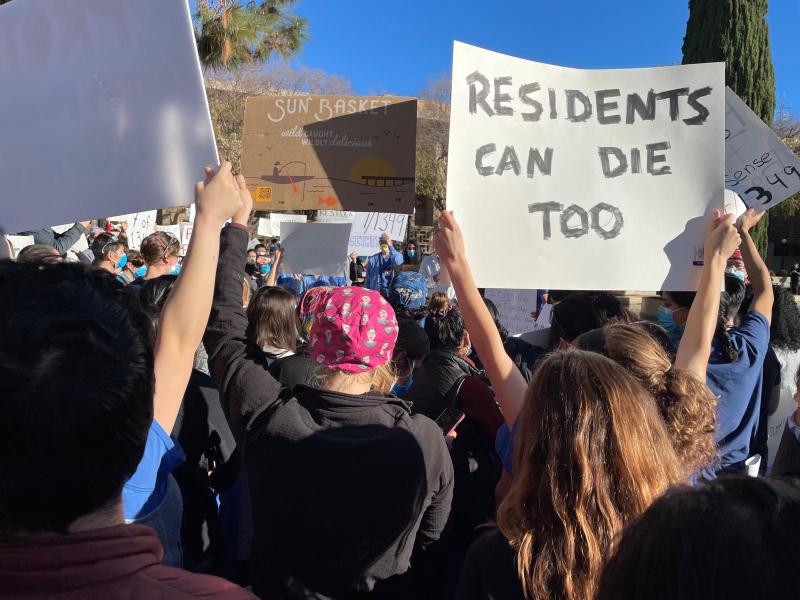Only seven of about 5,000 doses in Stanford Medicine’s first wave of COVID-19 vaccinations were allocated to its front-line residents and fellows, according to an open letter from chief residents. Over a hundred protested the rollout at Stanford Hospital on Friday morning.
The approximately 1,300 residents and fellows often work 80 or more hours per week and are being actively recruited to join COVID-19 intensive care teams amid the surge in cases. In some instances, residents and fellows were passed over for vaccination in favor of senior faculty and attendings who are working from home or have minimal contact with COVID-positive patients.
Stanford Medicine leadership apologized for the botched vaccine distribution in a Friday letter to colleagues. “We fully recognize we should have acted more swiftly to address the errors that resulted in an outcome we did not anticipate,” leaders wrote. “We are truly sorry.”
In the letter, signed by staff members like Stanford Health Care President David Entwistle and Chief Medical Officer Niraj Sehgal, leadership added they are optimistic that a large shipment of vaccines will arrive next week, which will allow Stanford Medicine to vaccinate a “substantial segment” of its staff.
The Food and Drug Administration authorized Moderna’s vaccine for emergency use on Friday night, allowing the shipment of millions more doses nationwide.
At the protest, with chants like “First in the room, back of the line,” residents said leadership had previously indicated to residents and fellows that they would be included in the first wave of vaccination.
In later interviews with The Daily, residents said Stanford Medicine’s initial decision not to allocate vaccines to them was disheartening, especially when many have stepped up to work with COVID-19-positive patients.
“It’s really, really hard when you’re making those sacrifices to feel so under-prioritized in the vaccine allocation system,” said Alisha Tolani ’10 M.D. ’17, an obstetrics and gynecology chief resident. “The goodwill and trust that people have is waning.”
Tolani said residents had not been included in the first wave of vaccinations due to the algorithm Stanford Medicine is using to determine who gets priority. One element of priority was the unit staff are in; since residents switch between units, they were not assigned a location, and by extension, no priority, according to Tolani. Age also likely pushed them down the list.
Stanford Health Care spokesperson Julie Greicius declined to confirm the details of the algorithm. Multiple members of Stanford’s vaccine committee also declined requests for interviews on the subject.
Third-year resident J. Bradley Segal said the algorithm also likely prioritizes individual risk over occupational risk. Thus, a young resident tasked with intubating COVID-19 patients would be lower on the vaccine list than an older attending working from home.
He expressed skepticism of Stanford’s plan to vaccinate more residents and fellows within the week. “Yeah, we’ve heard that one before,” he said, later adding that the email from administrators, titled “COVID-19 Vaccine Distribution Plan,” included no specifics on the distribution plan.
Greicius wrote that Stanford is “immediately revising our plan to better sequence the distribution of the vaccine.”
Fourth-year anesthesiology resident Anthony Sawyer has taken care of COVID-19-positive patients and has very likely intubated one — a procedure that requires doctors to get in close contact with a patient while inserting a tube into their airway.
“I appreciate an admission that this didn’t go well,” he said. “But how are we going to change the system so that those who are most vulnerable are protected?”
